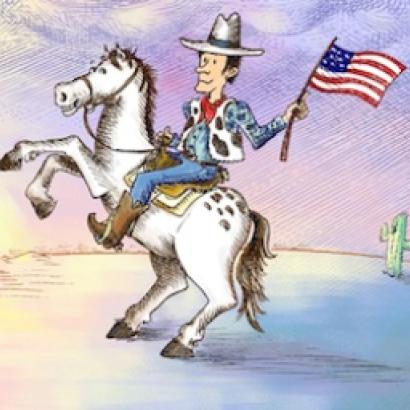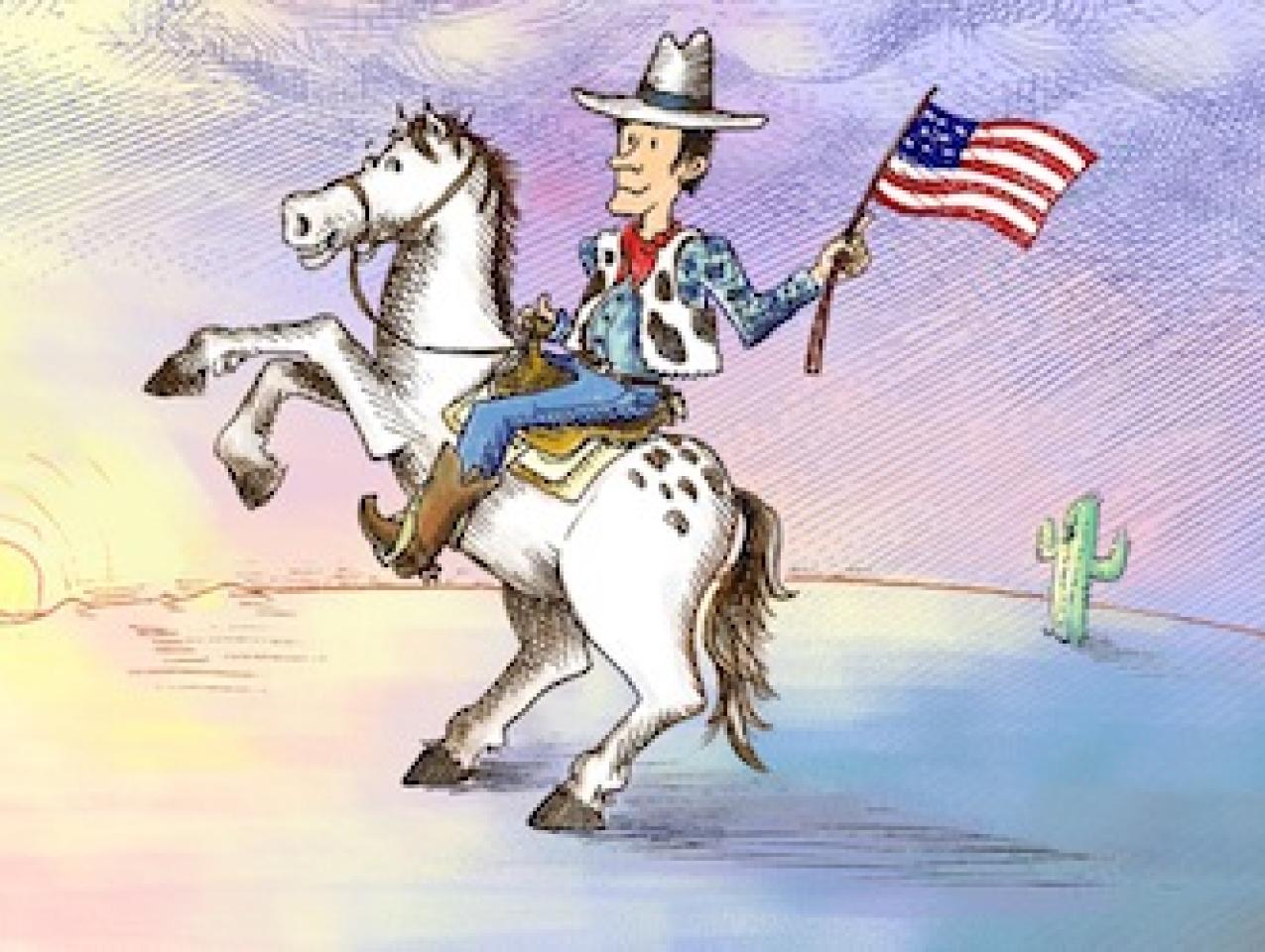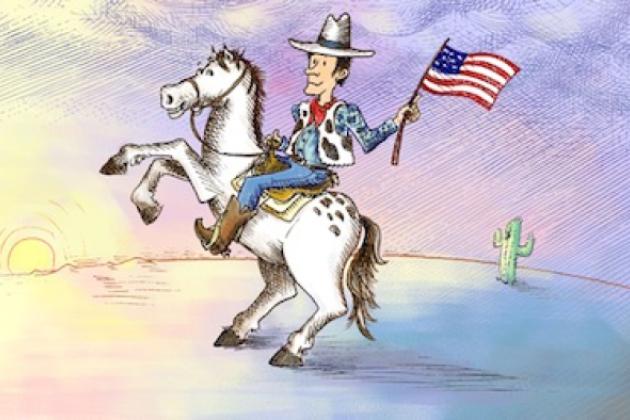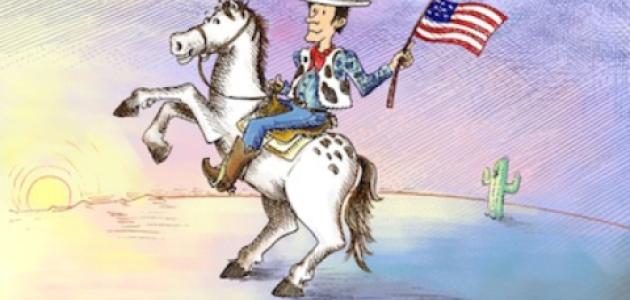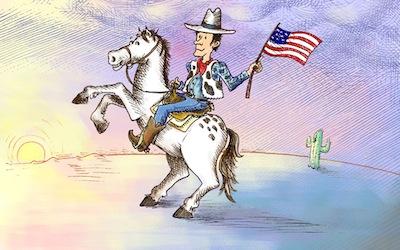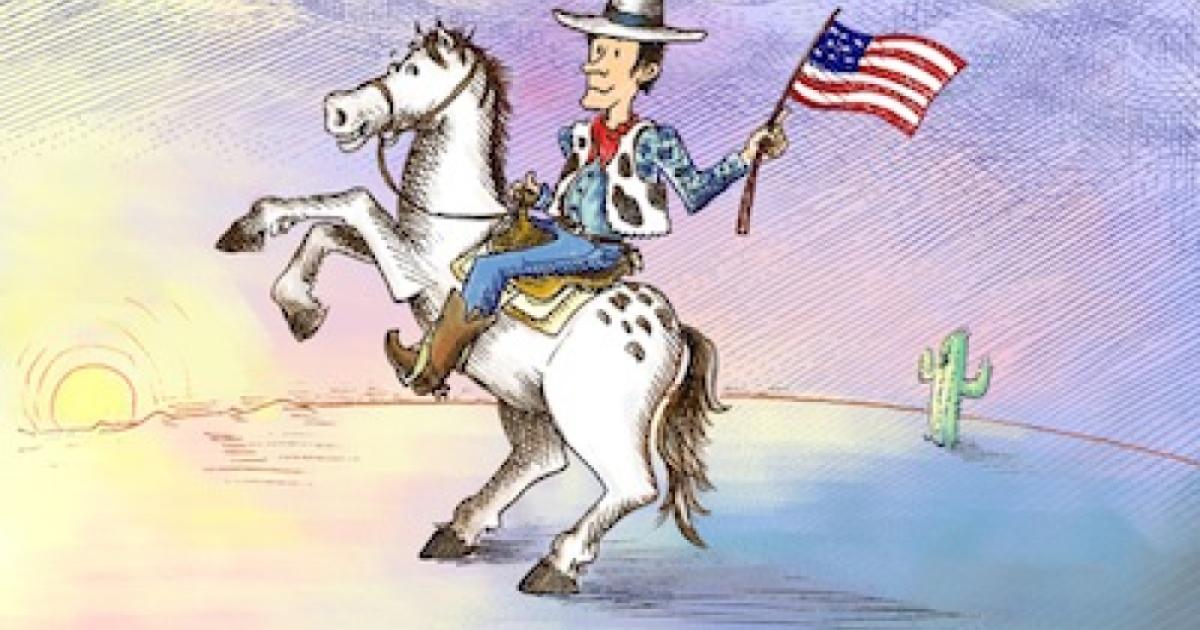- Economics
- History
Talk of American decline is in the air. And why not when the aggregate U.S. debt nears $17 trillion? Unemployment has not dipped below 7.8 percent in 48 months. GDP growth over the last four years has averaged an anemic 2 percent. The economy contracted in the last quarter of 2012. Record numbers of Americans are on food stamps, unemployment, and disability insurance.
“Lead from behind” has become a catchphrase for a new American retrenchment abroad. Exhausted from a decade of wars in Afghanistan and Iraq, and with huge defense cuts on the horizon, the United States has ceded leadership in the out-of-vogue “war on terror” to France to stave off an Islamist takeover of Mali. The Arab world certainly seems more unstable than ever. A Muslim Brotherhood government presides over an unstable Egypt. The death toll in Syria now exceeds 60,000. Islamist terrorists slaughtered Westerner hostages in Algeria, months after the murder of an American ambassador and three others in Benghazi. Mediterranean Libya is starting to resemble Somalia.
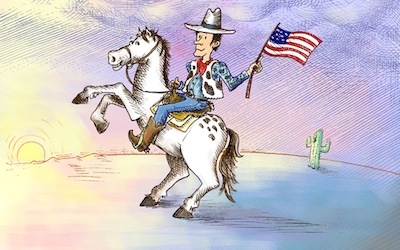
Illustration by Barbara Kelley
There are reasons for pessimism about the world in general and America in particular, which is more divided politically than at any period since the turbulent 1960s—torn apart by fresh arguments over the Second Amendment, the debt, the federalization of health care, and proposed amnesty for illegal aliens. Still, the general despair does not mean that there are not reasons for optimism, especially when we compare our lot with that of other countries. The United States still enjoys the most robust demography of the major Western industrial nations. Its Constitution ensures a political stability not found elsewhere. There is no danger of political dissolution of the sort that the European Union faces. We have been spared the riots and turbulence of Greece.
An American Farming Renaissance
More importantly, recent revolutionary trends in the United States have either gone unnoticed or been taken largely for granted. Yet these underappreciated developments offer hope for an American renaissance unlike any in our recent memory—mostly despite, rather than because of, the federal government that currently borrows nearly $.40 for each dollar it spends.
Take agriculture. Just a decade ago, there was talk of the United States becoming a net food importer. Commodity prices were largely flat. Farming seemed to be losing its competitive edge plagued as it was by high-energy costs, flat food demand, and prognostications of crippling droughts brought on by man-made climate change. But a perfect storm of events has suddenly redefined the American farm in a way analogous to the mechanized revolution of the 1920s.
China and India have reached a proverbial tipping-point, where millions of newly upscale consumers have broadened their tastes for everything from almonds and raisins to processed foods that require substantial bulk purchases of grains, rice, meats, and corn syrup. If only 20 percent of the Indian and Chinese population have the capital to afford new choices in imported food, such percentages still represent about 400 million new Westernized consumers, a class larger than most other nations.
An unnecessary biofuels program has diverted valuable acreage to ethanol production, creating commodity shortages while boosting prices and adding to the new sense of demand for American produce. Meanwhile, new fertilizers and chemicals, genetic engineering, and computerized mechanization have done the nearly impossible—they have transformed an efficient agriculture of the late twentieth century into an even more productive new enterprise. In 2011, the United States set a new record of over $140 billion in export agricultural earnings, after ensuring 315 million Americans the most diverse, safest, and cheapest food in the world.
In my own environs of Central California, the sudden changes are mind-boggling. California exported a record $21 billion worth of produce from some 400 crops last year. Almond acreage has soared to 760,000 acres, while prices remain higher in real dollars than when the industry was at just a quarter of its present plantings—a situation quite unlike the past cycles of overplanting and crashing prices. New rootstocks, improved cultivars, second-generation drip irrigation technologies, and computerized fertilization regimens have made once sandy and marginal soils as productive for fruits and nuts as deep loams.
Along with increased efficiency and vast new markets, America’s farm competitors are also facing new challenges. The huge European Union subsidy program is proving unsustainable, especially its once vast cash transfers to Mediterranean farmers. Energy and labor prices are far higher in Europe and regulations more Byzantine. Elsewhere, most of the world’s agriculture does not operate according to free-market principles and remains hampered by state interference.
The Future of Fuel
Along with food, fuel is another one of modern life’s essential resources—and in that domain, too, America could soon be preeminent. The traditional notion of “peak oil” and the once gloomy prognostications of a future of ever increasing bills for imported natural gas have almost instantly disappeared. Thanks to the new technologies of fracking and horizontal drilling, America not only has the largest combined gas, oil, and coal resources in the world, but may also become the largest producer of all three by 2020.
Four years ago, vast new finds of gas in the Midwest and East, along with extensive discoveries in California and Alaska, suggested that we might in the distant future need only to rely on North American produced oil and gas. Today, the once widely mocked Nixon-era slogan of self-sufficiency in oil and gas could become a reality. If the current development of oil and gas on private lands were expanded by new federal leases on public lands, self-sufficiency could come even more rapidly—especially if trucks and heavy equipment change over to natural gas fuels. California alone may have 35 billion barrels of oil reserves in its newly appreciated Monterey Shale formation, a natural treasure that could dwarf the riches of Napa Valley wine industry or Hollywood.
The gradual displacement of coal by natural gas for electrical production will not only help clean the American atmosphere in a way federally-subsidized wind and solar power have not, but also create an industry of coal exportation to energy hungry, resource poor China and India. As a result of plentiful supplies of domestic natural gas, American consumers will save over $100 billion in reduced household bills over the next decade.
With the new production, even at falling prices, gas and oil revenues provided a half-trillion dollar boost to the economy in 2011 alone. Given the new competitive pricing of domestic American fuels, long departed energy-dependent industries in petrochemicals, fertilizers, and steel and aluminum production may once again return to American shores. The 1970s nightmare of oil embargoes, the 1990s scenario of fighting in the Middle East to help keep open the sea-lanes to the Persian Gulf, and the astronomical oil and gas importation costs of the 2000s may all be ended by thousands of new American gas and oil wells, requiring millions of new American workers.
Silicon Valley Rejuvenated
During much of the 1980s, there was wide scale apprehension that the new computer age belonged to Asia. Apple’s miracle was nearly defunct. Steve Jobs remained exiled from the company for a decade, as he struggled with a number of start-up companies. Experimental high definition television was forecast soon to become a veritable Japanese monopoly. Sony bought Rockefeller Center and Pebble Beach was sold to Japanese investors—all supposed proof of a superior Asian economic model of government and private industry partnership. The dot-com crash at the end of the 1990s was a reminder that the best days of Silicon Valley had come and gone.
Yet just two decades later, the genius of Silicon Valley and its second-generation affiliates across the country, from Washington to Texas, have redefined modern living in a truly global sense. Each morning, billions worldwide wake up to multitask on their iPhones, check in with their Facebook accounts, run Google searches on their laptops and iPads, tap into Microsoft word programs, and buy things on Amazon. While much of the labor to produce these items is outsourced abroad, and while cheaper knock-off models and versions have captured a large share of the commodity purchases, so far, the United States continues to produce the majority of first-generation ideas and innovations that fuel the information and communication revolutions. A once nearly insolvent Apple of the 1980s is currently the world’s second largest publicly traded company, with a market capitalization value of some $626 billion.
Despite high labor costs, overregulation, and increasing taxation, American tech companies profit from an informal and meritocratic culture that rewards talent more than it relies on hierarchies of birth, class, and tribe so common abroad. While American public school education is in crisis, and although the humanities have been politicized on our college campuses, American math, science, engineering, and professional schools in business and medicine still remain preeminent. That explains why in a recent Times Higher Education ranking of world universities, eight of the top ten institutions were American. California alone had more universities—Berkeley, Cal Tech, Stanford, and UCLA—among the top fifteen ranked campuses than any single nation except the United States as a whole.
Bouts of collective pessimism are common in America, and the current episode of collective depression is understandable given our mounting debt and unsustainable entitlements. But we should remember one thing. In the past, when we feared seemingly great rising powers—from the dynamic Germany of the 1930s, to the Soviet juggernaut of the 1950s that put a man into space, to the supposedly unstoppable Japan, Inc. paradigm of the 1980s, to the much admired post-national European Union collective of the 1990s— all such rivals eventually imploded or sputtered. America, meanwhile, recouped and regained its preeminence in peace and war.
Why such resilience? Largely because of our far greater reliance on free markets, transparent meritocracy, rewards for individual initiative and success, comparatively smaller government, and constitutionally-protected liberties. Despite the present despondency—over two-thirds of Americans in most polls believe their country is on the wrong track—these uniquely American attributes are propelling revolutions in fuels, agriculture, and informational sciences in a manner unlike anywhere abroad. That American breakthroughs in fracking, horizontal drilling, improved agricultural protocols and technologies, mobile communications, social networking, and online commerce have developed without fanfare and largely without government aid should remind us that the sources of our continual renaissance lie more outside than inside Washington.








